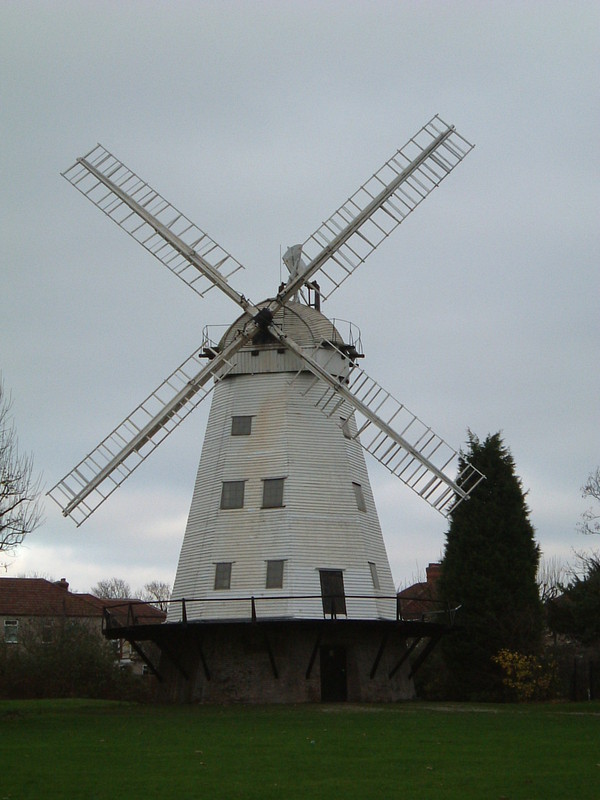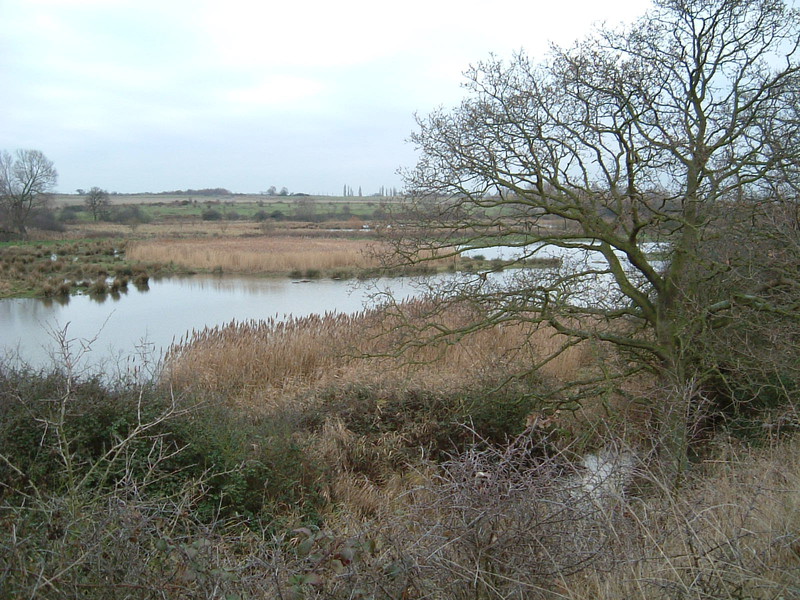
Incredibly, the Loop saves the very worst for last. I would love to be here writing about the perfect end to a lovely long-distance walk, but I can't because day 15 of the Loop is abysmal. I've been straining my brain to think of a worse day's walk, but I genuinely can't; the last 11.75 miles of the London Loop easily rate as the worst day walk I have done, not just in Britain, but in the whole world. It's a really huge disappointment, and to cap it all it's the longest day on the entire Loop.
Starting in Harold Wood sets the scene perfectly. I didn't rate the place when I arrived there at the end of day 14, and I still don't rate it having started there on this section. Luckily it doesn't take long to escape into the countryside, where the Loop starts to follow the Ingrebourne (the same river as the poor, choked Carter's Brook from the end of the previous section). The scenery is dull and the river all but invisible in its overgrown trough, and soon enough the path turns right towards Hall Lane, a nondescript B-road that the Loop follows over the A127 and past Strawberry Farm. This is inane road walking of the worst kind, but get used to it, as there's more to come.
Ducking out through more suburbia the Loop heads through a small wood and into fields full of horses, before sidling past a school and slipping back into tedious housing. After tracing three sides of a square in a boring but unavoidable detour the path drifts back towards the fields, but don't get too excited because all it does is wander along the back of the houses of Hornchurch, sandwiched between the choked Ingrebourne and the suburbs.
Windmills and Marshes

More banal suburbia takes you to Upminster Bridge tube station where you can take a worthwhile detour to see Upminster Mill, a windmill plonked in the middle of all this development, but for the next mile or so the Loop follows the Ingrebourne Valley Green Way, a tarmac path that winds alongside the uninspiring Ingrebourne River. The urban sprawl is never far away to the right and this is hardly countryside walking, but persevere because a mile-and-a-half from the tube station is Hornchurch Country Park, the first half-decent spot on the walk.
The reason Hornchurch Country Park is interesting is because in the winter it floods and creates London's largest freshwater marsh, which in turn brings in the wildlife. In reality the marsh is a pretty desolate place (though after the walk to get there it's almost pleasant) and the views are somewhat limited. At least the path remains good and firm – it's still tarmac – but after the next section the thought of yet more hard paths will drive you mad, for it's time to hit the road again.
After passing a lake and Albyns Farm the Loop ducks back into the conurbation of South Hornchurch, and deadly boring it is too. The guidebook even advocates the use of a bus to get to Rainham, but for those of us who are doing this walk because we want to complete the Loop, there's no choice but to plod on for another weary mile or so along backstreets and the A125. It's uninspiring and depressing, but eventually you reach Rainham Village and things take a slight turn for the better.
To the River

Rainham Village is home to an imposing church and an old townhouse called Rainham Hall, though the village feel of yesteryear has been somewhat squashed by its proximity to the train station and a massive amount of engineering work on the Channel Tunnel rail link. Rainham station is also the only option for returning home, which is incredibly irritating because it's still a couple of miles to the end of the Loop at Coldharbour Point, two miles that you have to retrace to get back to civilisation.
And what a bloody awful two miles they are, definitely the worst end to a long-distance walk that I've ever encountered. From Rainham the Loop follows Ferry Lane all the way to the Thames, going past huge yards full of containers, passing under the rumbling A13 trunk road and picking its way through the industrial quagmire that this part of the world has become. Stick to Ferry Lane and don't turn left down Coldharbour Lane (a new road that's not mentioned in the guidebook) and you'll eventually reach the Thames after a thankless trudge through miserable car yards and lonely industrial units.
The guidebook reckons that the sight of the Thames is enough to make up for all the industry, but I'm obviously firing from a different set of cylinders. The Thames round here is lonely and windswept, and the riverside path that wanders past the Tilda Rice factory and east towards the end of the Loop is notable only for the optimistically large number of benches that line it. I have no idea whether anyone ever uses them, but once you pass the factory and a collection of fascinating scuppered concrete barges that were used during the D-Day landings, you're into the bowels of hell.

The hills to your left are the grassy result of landfill, and they'd be almost pleasant if that was all there was to it. Unfortunately the dumping hasn't stopped yet, and just round the next corner the hills are live with the delights of rubbish. The whole place stinks to high heaven – yes, even worse than the sewage works in Kingston on day 6 – and then, just when you think it can't get worse, the path ends at a rusty gate in the middle of nowhere. And that, ladies and gentleman, is it; at the risk of dropping an awful pun, it stinks.
So that's the end of the Loop, and one thing's for sure. When I think about the London Outer Orbital Path I'll remember the stunning downs of south London and the lovely canal walking of north-west London. I'll recall the walks through the British class system and the myriad stately homes that pepper the path, and I'll remember quite a few delightful pubs. One thing I'll be trying to forget, though, is the last section from Harold Wood to Coldharbour. What a terrible way to end such a great walk.